So berechnen Sie die Amperestunden, die Sie wirklich benötigen
So berechnen Sie die Amperestunden, die Sie wirklich benötigen
Bei der Auswahl einer Batterie für Ihr Projekt oder Ihre Anwendung ist die Berechnung der tatsächlich benötigten Amperestunden einer der wichtigsten Faktoren für optimale Leistung und Sicherheit. Amperestunden bestimmen die Lebensdauer einer Batterie basierend auf der Strommenge, die Ihr Gerät benötigt. In diesem Blogbeitrag gehen wir detailliert auf die Funktionsweise von Amperestunden, ihre Berechnung und die Anpassung an Ihren tatsächlichen Strombedarf ein.
- Was sind Amperestunden und warum sind sie wichtig?
- Wie Amperestunden mit Batteriespannung und Wattstunden zusammenhängen
- Bestimmen Ihres Energieverbrauchs in Amperestunden
- Berücksichtigung der Batterieeffizienz und der Entladetiefe
- Tägliche Nutzung vs. Backup-Nutzung: Wie sich der Amperestundenbedarf ändert
- Die Rolle der Spitzenlast und der Wechselrichtereffizienz
- Reihen- und Parallelschaltung von Batterien und ihre Auswirkungen auf die Amperestunden
- Amperestunden für verschiedene Anwendungen
- Wie sich die Temperatur auf die Amperestunden auswirkt
- Sicherheits- und Batteriemanagementsysteme (BMS)
- Beispiel aus der Praxis: Berechnung der Amperestunden für ein Tiny Home
- Auswahl der richtigen Batterie für Ihre berechneten Amperestunden
Was sind Amperestunden und warum sind sie wichtig?
Amperestunden (Ah) geben die Kapazität einer Batterie an. Einfach ausgedrückt bedeutet eine Amperestunde, dass eine Batterie eine Stunde lang 1 Ampere Strom liefern kann. Eine 100-Ah-Batterie kann unter idealen Bedingungen theoretisch 100 Ampere für eine Stunde oder 1 Ampere für 100 Stunden liefern. In der Praxis spielen jedoch Faktoren wie Entladerate, Temperatur und Alter der Batterie eine Rolle.
Die Kenntnis der Amperestunden ist unerlässlich, wenn Sie eine Batterie für Solaranlagen, Wohnmobile, Schiffsanwendungen, Golfwagen oder sogar eine Notstromversorgung dimensionieren möchten. Eine Unterschätzung Ihres Amperestundenbedarfs kann dazu führen, dass Ihnen im Bedarfsfall der Strom ausgeht. Eine Überdimensionierung kann unnötig teuer werden.
Wie Amperestunden mit Batteriespannung und Wattstunden zusammenhängen
Amperestunden existieren nicht isoliert. Sie stehen in engem Zusammenhang mit Spannung und Wattstunden. Die Formel:
Wattstunden (Wh) = Amperestunden (Ah) x Spannung (V)
ist entscheidend, wenn Sie Batterien vergleichen oder Ihre Energiespeicherung planen. Beispielsweise hat eine 12-V-Batterie mit 100 Ah eine Kapazität von 1200 Wh. Das Verhältnis von Amperestunden und Wattstunden hilft bei der Berechnung Ihres genauen Energiebedarfs.
Bestimmen Ihres Energieverbrauchs in Amperestunden
Um die tatsächlich benötigten Amperestunden zu berechnen, schätzen Sie zunächst Ihren Gesamtenergieverbrauch. Erstellen Sie eine Liste aller Geräte, deren Wattzahl und die Anzahl der Betriebsstunden pro Tag. Hier ein einfaches Beispiel:
|
Gerät |
Leistung (W) |
Stunden/Tag |
Wattstunden/Tag |
|
LED-Licht |
10 W |
5 |
50 |
|
Mini-Kühlschrank |
60 W |
24 |
1440 |
|
Lüfter |
30 W |
8 |
240 |
|
Gesamt |
|
|
1730 Wh |
Dann rechnen Sie Wattstunden in Amperestunden um:
Amperestunden = Wattstunden / Batteriespannung
Wenn Sie eine 12-V-Batterie verwenden:
1730 Wh / 12 V = ~144,2 Ah
In diesem Fall benötigen Sie also mindestens 144 Ah Batteriekapazität pro Tag. Um Ineffizienzen zu berücksichtigen, können Sie einen höheren Wert wählen.
>>Siehe auch: Warum Sie in eine Batteriebox investieren sollten. Der ultimative Leitfaden für Batteriespeicherlösungen.
Berücksichtigung der Batterieeffizienz und der Entladetiefe
Batterien sind nicht 100 % effizient. Beispielsweise haben Blei-Säure-Batterien typischerweise eine nutzbare Entladetiefe (DoD) von 50 %, während LiFePO4-Batterien sicher bis zu 80–90 % entladen werden können. Dies beeinflusst, wie viele Amperestunden Sie tatsächlich installieren sollten.
Wenn Sie berechnen, dass Sie 144 Ah pro Tag benötigen und eine Blei-Säure-Batterie mit 50 % DoD verwenden:
Benötigte Ah = 144Ah / 0,5 = 288Ah
Für eine LiFePO4-Batterie mit 90 % DoD:
Benötigte Ah = 144Ah / 0,9 = 160Ah
Dies zeigt, dass der von Ihnen gewählte Batterietyp erhebliche Auswirkungen auf die benötigten Amperestunden hat.
Tägliche Nutzung vs. Backup-Nutzung: Wie sich der Amperestundenbedarf ändert
Denken Sie an Ihre Anwendung. Wird die Batterie täglich oder als Backup-System verwendet? Der tägliche Gebrauch erfordert eine höhere Kapazität und Haltbarkeit. Backup-Systeme vertragen möglicherweise längere Ladezeiten oder eine seltenere Nutzung.
Bei Backup-Systemen sollten Sie auch berücksichtigen, wie viele Tage Autonomie Sie wünschen – wie viele Tage das System ohne Aufladung (z. B. durch Solarenergie) laufen soll. Für 2 Tage Autonomie:
Benötigte Amperestunden = Tägliche Amperestunden x Anzahl der Tage
zB 144Ah/Tag x 2 = 288Ah
In einem Backup-Szenario kann es bei längeren Ausfällen entscheidend sein, über ausreichend Amperestunden zu verfügen.
Die Rolle der Spitzenlast und der Wechselrichtereffizienz
Manchmal verbrauchen Ihre Geräte gleichzeitig viel Strom (Spitzenlast), insbesondere Motoren oder Kompressoren. Ihr Batteriespeicher muss diese Last kurzfristig bewältigen können. Berechnen Sie nicht nur den Durchschnittsverbrauch, sondern auch den Spitzenbedarf.
Wechselrichter verursachen auch Effizienzverluste (typischerweise 85–95 %). Wenn Sie einen Wechselrichter betreiben, berücksichtigen Sie dies bei Ihrer Amperestundenberechnung:
Angepasste Wattstunden = Erforderliche Wattstunden / Wechselrichtereffizienz
Wenn der Wirkungsgrad des Wechselrichters 90 % beträgt und Ihr System 1730 Wh benötigt:
1730 Wh / 0,9 = 1922 Wh
1922Wh / 12V = ~160Ah
Ihr tatsächlicher Bedarf an Amperestunden beträgt in diesem Fall 160 Ah, nicht nur 144 Ah.
Reihen- und Parallelschaltung von Batterien und ihre Auswirkungen auf die Amperestunden
Beim Anschluss von Batterien erhöhen Reihenschaltungen die Spannung, während Parallelschaltungen die Amperestunden erhöhen. Zum Beispiel:
2 x 12 V 100 Ah Batterien in Reihe = 24 V 100 Ah (gleiche Ah, doppelte Spannung)
2 x 12 V 100 Ah Batterien parallel = 12 V 200 Ah (doppelte Ah, gleiche Spannung)
Die Kenntnis Ihrer Systemspannung und die Wahl der richtigen Konfiguration wirken sich darauf aus, wie viele Amperestunden Sie nutzen können.
Amperestunden für verschiedene Anwendungen
Leben im Wohnmobil oder Van
Bei Wohnmobilen kann der typische tägliche Verbrauch zwischen 100 und 300 Ah liegen, je nachdem, ob Sie Klimaanlage, Kühlung und Elektronik betreiben. Berücksichtigen Sie bei der Dimensionierung immer einen Sicherheitsspielraum.
Off-Grid-Solar
Off-Grid-Systeme benötigen genügend Amperestunden, um Ihre Verbraucher mit Strom zu versorgen und Sie durch bewölkte Tage zu bringen. Berücksichtigen Sie immer die Autonomietage.
Marinesysteme
Salzwasserumgebungen erfordern versiegelte Batterien mit hoher Haltbarkeit. Bemessen Sie Ihre Amperestunden anhand von Navigationssystemen, Beleuchtung und Kühlung.
Home-Backup
Heimsysteme benötigen höhere Kapazitäten. Berechnen Sie die Gesamtleistung der wichtigsten Geräte und multiplizieren Sie diese mit der benötigten Backup-Stundenzahl.
Wie sich die Temperatur auf die Amperestunden auswirkt
Die Temperatur beeinflusst die Batterieleistung. Kälte verringert die Kapazität, während Hitze die Batterielebensdauer verkürzen kann. Die Amperestunden müssen unter Annahme ungünstigster Temperaturen oder mithilfe temperaturkompensierter Geräte berechnet werden.
Im Vergleich zu Blei-Säure-Batterien weisen LiFePO4-Batterien bei unterschiedlichen Temperaturen eine bessere Leistung auf und behalten auch bei kaltem Wetter einen höheren Prozentsatz ihrer Nennamperestunden.
Sicherheits- und Batteriemanagementsysteme (BMS)
Ein geeignetes BMS schützt vor Tiefentladung, Überladung, Kurzschluss und thermischer Überlastung. Obwohl es die tatsächliche Amperestundenzahl nicht ändert, stellt ein gutes BMS sicher, dass Sie die volle Nennkapazität Ihrer Batterie sicher nutzen können.
Achten Sie bei der Berechnung der tatsächlich benötigten Amperestunden darauf, dass Ihre Batterieauswahl ein geeignetes BMS enthält, insbesondere bei größeren Systemen.
>>Siehe auch: Was ist der ideale Ladezustand für eine 48-Volt-Golfwagenbatterie?
Beispiel aus der Praxis: Berechnung der Amperestunden für ein Tiny Home
Nehmen wir an, Ihr Tiny Home verwendet:
Lichter: 50 W für 5 Stunden
Kühlschrank: 100 W für 24 Stunden
Laptop: 60 W für 6 Stunden
Wasserpumpe: 70 W für 1 Stunde
Gesamt = 50 x 5 + 100 x 24 + 60 x 6 + 70 x 1 = 250 + 2400 + 360 + 70 = 3080 Wh
Amperestunden = 3080 Wh / 12 V = ~ 257 Ah
Bei Verwendung einer LiFePO4-Batterie mit 90 % DoD:
Erforderliche Batteriekapazität = 257 Ah / 0,9 = ~285 Ah
Für einen zuverlässigen täglichen Gebrauch benötigen Sie also eine Batteriebank mit etwa 285 Ah.
Auswahl der richtigen Batterie für Ihre berechneten Amperestunden
Sobald Sie Ihren Amperestundenbedarf kennen, können Sie aus einer Reihe von Batterien wählen. Wistek bietet hochwertige LiFePO4-Akkupacks an:
100 Ah : Ideal für kleine Systeme oder den leichten täglichen Gebrauch
105 Ah : Ausgewogene Leistung und kompakte Größe
314 Ah : Am besten für hohe Kapazitätsanforderungen oder Backup-Systeme
Jede dieser Optionen verfügt über ein zuverlässiges BMS, ein robustes Innendesign und eine lange Lebensdauer.
Die genaue Berechnung Ihrer Amperestunden ist entscheidend, um sicherzustellen, dass Sie genügend Energie für Ihren Bedarf haben, ohne zu viel auszugeben oder Ausfallzeiten zu riskieren. Ob für netzunabhängiges Leben, mobile Anwendungen oder Backup-Systeme – die Kenntnis der Amperestunden ermöglicht Ihnen fundierte und kosteneffiziente Entscheidungen.
Nehmen Sie sich Zeit, Ihren tatsächlichen Verbrauch zu ermitteln, Ineffizienzen zu berücksichtigen und den richtigen Batterietyp auszuwählen. Wistek unterstützt Sie mit zuverlässigen, auf Ihre Bedürfnisse zugeschnittenen LiFePO4-Akkupacks.
Wenn Sie wissen, wie Sie die tatsächlich benötigten Amperestunden berechnen, haben Sie die Leistung und Zuverlässigkeit Ihres Energiesystems unter Kontrolle.





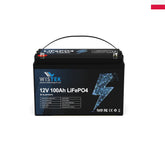
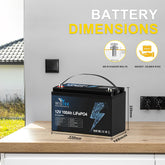

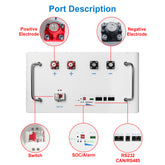
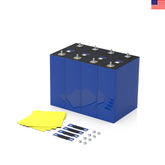



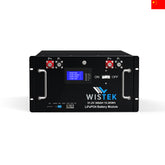
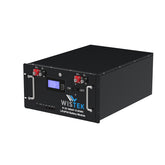









Leave a comment
All blog comments are checked prior to publishing